
Lizards Around Las Vegas, Wildlife Around Las Vegas
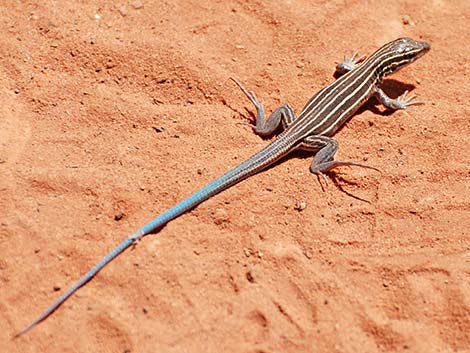 |
General Description: Plateau Striped Whiptails (Aspidoscelis velox) are active, slim-bodied, 4-inch lizards with a 9-inch tail. Scales smooth. The back is dark with light longitudinal stripes. If present, the middle light stripe is faded compared to the other light stripes. The tail is blue or at least has a blue tinge. Active; almost never stops moving. This species is all female -- there are no males. Taxonomy: Whiptail Lizard Family (Teiidae). Technical Description: Body size to 4 in.; tail length to 9 in. Dorsal color blue-black with 6-7 tan stripes; few if any light spots in the dark stripes. Ear openings large. Dorsal scales small and granular; ventral scales large and rectangular. Tail blue; most prominent in juveniles. More than three enlarged angular scales ahead of the vent. |
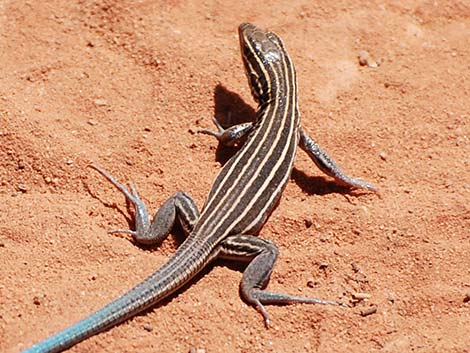 |
Diet: Forage actively on the ground during the day and eat anything they can catch, including flying insects, beetles, scorpions, and other lizards. Sometimes seen digging in loose soil for food. Habitat: Widely distributed from the lower desert to the lower forest zones (Lower Sonoran, Upper Sonoran, Pinyon-Juniper Woodland life zones) in areas with limited to moderate amounts of vegetation. These lizards forage in and around shrubs, and use open areas to run and escape predators. |
 |
Range: This species occurs throughout the western U.S. from California, eastern Oregon, and southern Idaho south to west Texas and northern Mexico. The (Great Basin) Western Whiptail occurs throughout Nevada, southeastern California, and western Arizona. The (Painted Desert) Western Whiptail occurs across southern Utah and northern Arizona. Breeding: Mate during spring; lay 1-4 eggs in early summer; hatch in late summer. Similar Species: None in southern Nevada. |
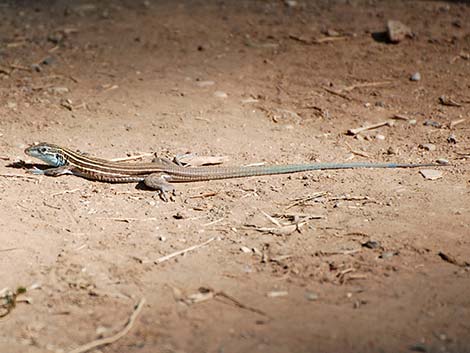 |
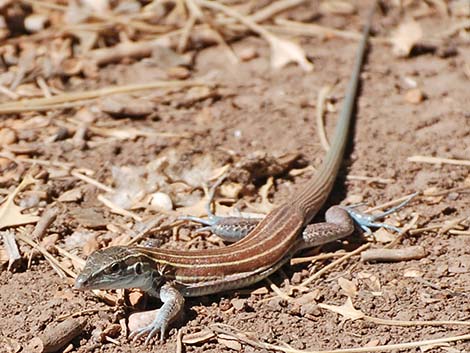 |
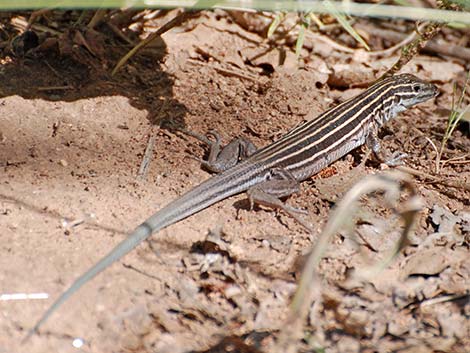 |
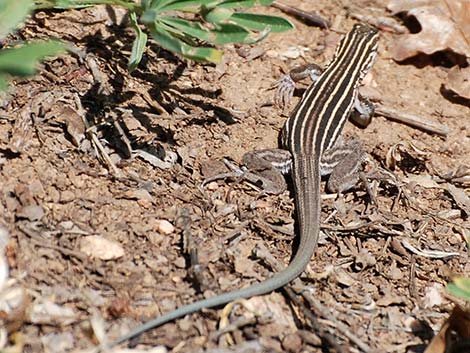 |
 |
 |
 |
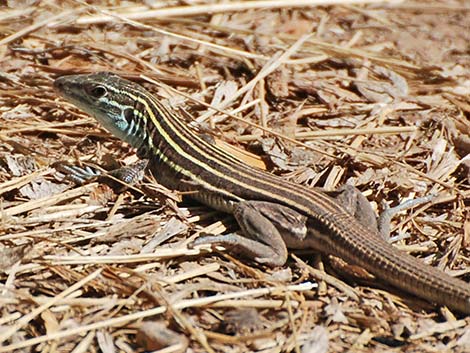 |
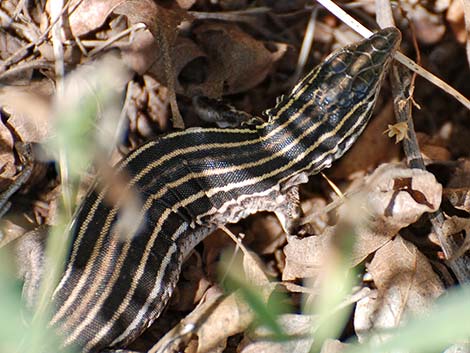 |
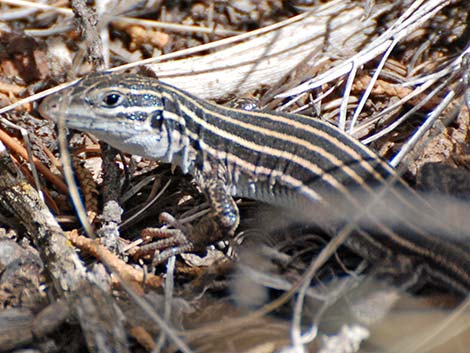 |
 Bracing its legs widely, this lizard digs into the ground ... |
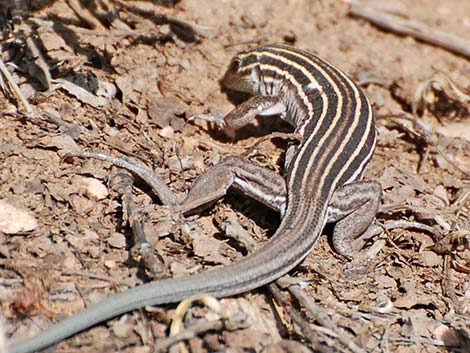 ... and digs up something tasty. |
Note: All distances, elevations, and other facts are approximate.
![]() ; Last updated 230912
; Last updated 230912
| Lizards Around Las Vegas | Wildlife Around Las Vegas | Glossary | Copyright, Conditions, Disclaimer | Home |